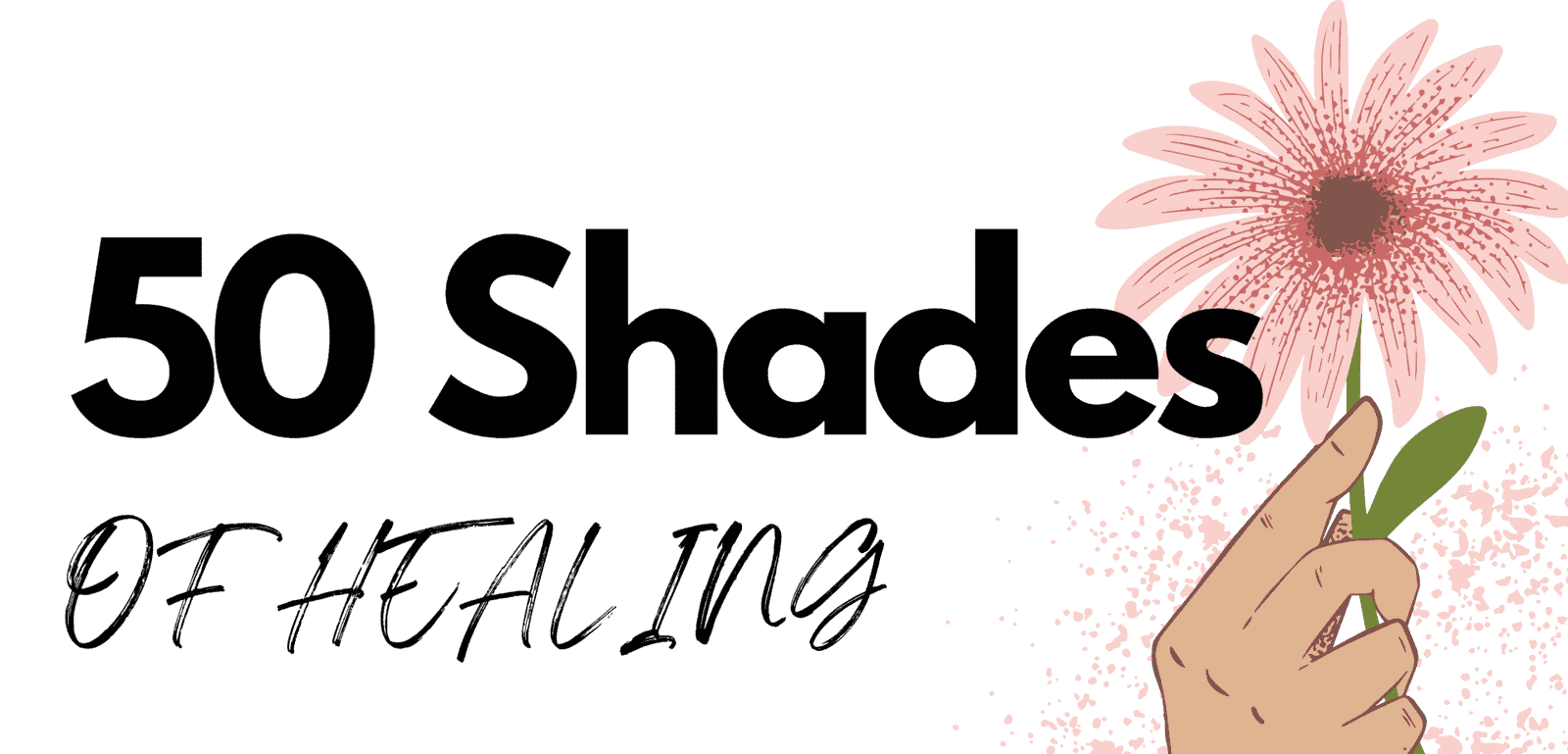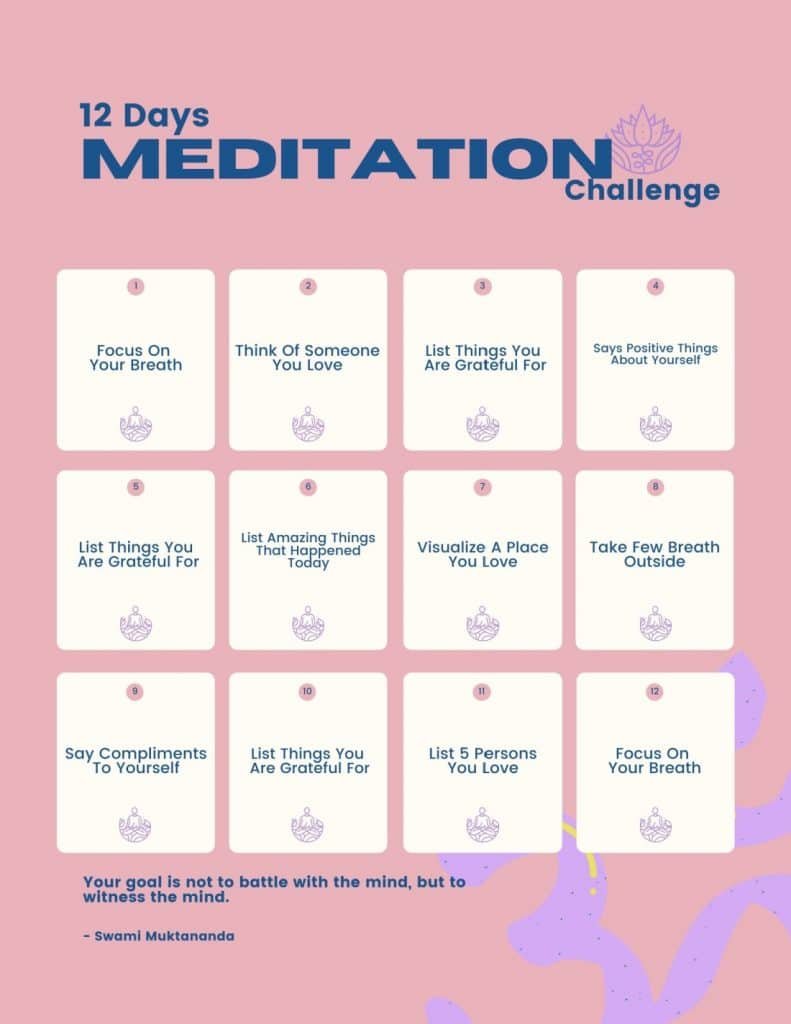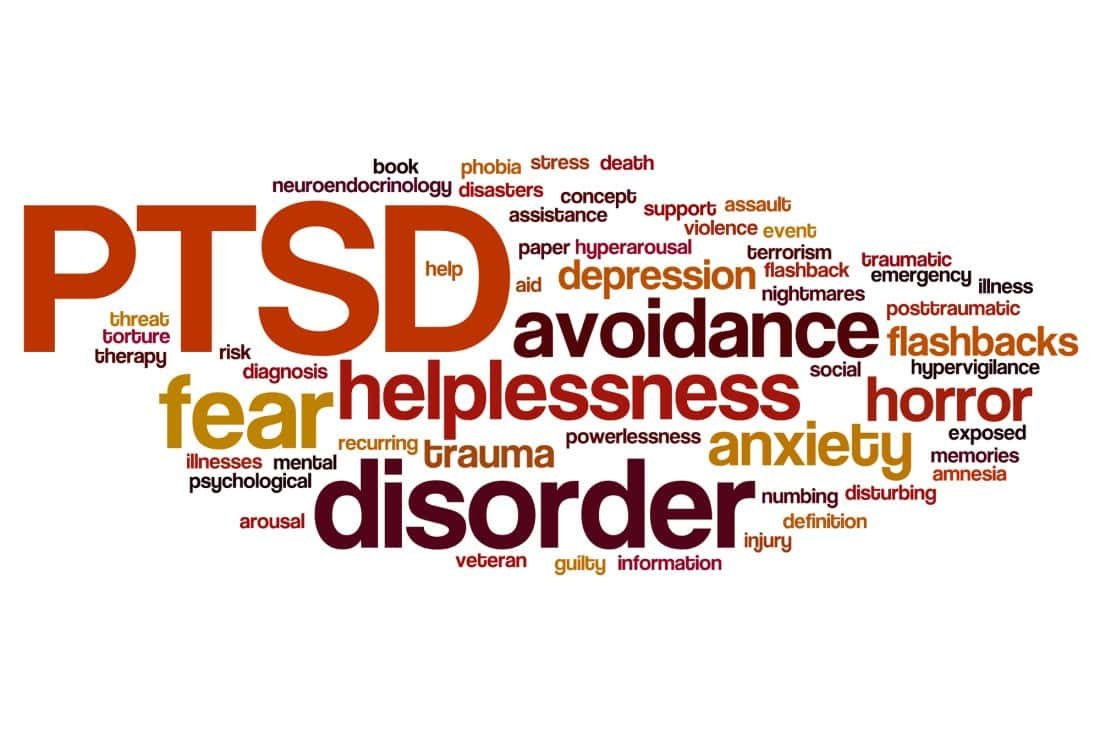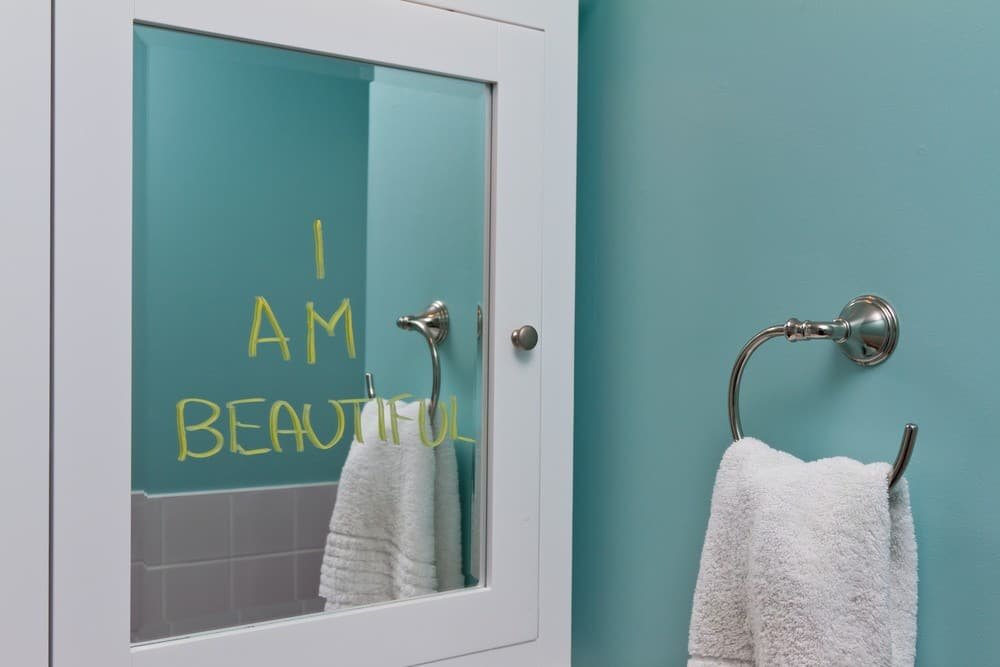How to Effectively Meditate to Boost Your Mental Health + Printable
There are many different ways to improve your mental health, but one of the most beneficial is through meditation. Meditation is a great way to reduce stress, anxiety, and depression, and can even help improve your focus and concentration. However, if you’re new to meditation, it can be difficult to know where to start. In this post, we’ll outline how to effectively meditate to get the most out of your practice.
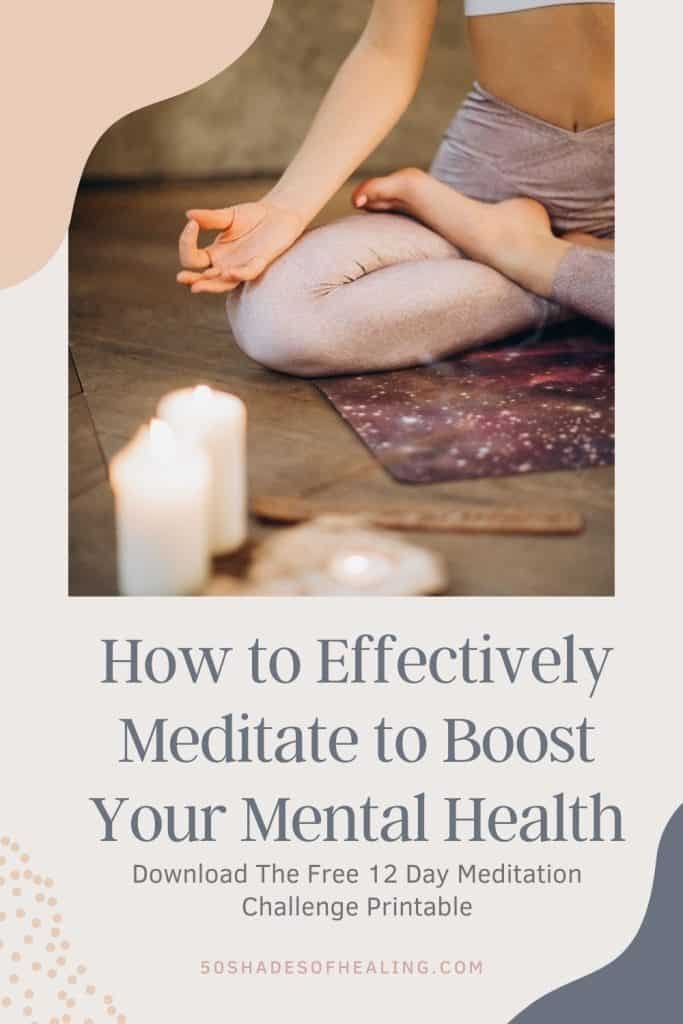
Take a few minutes to focus your mind and breathe. It makes you feel calmer, better, and less stressed, doesn’t it?
Meditation does not always have to mean sitting down, cross-legged, with your eyes closed. You can do it whenever, wherever you are.
Here is How to Effectively Meditate to Boost Your Mental Health. Read and learn what meditation is all about.
It is quite popular nowadays, as mental health issues have become more significant and more visible in the community. There are different types of meditation and you’ll read about them here.
Meditation can give you mental stability. It has a lot of benefits, too. Nothing can boost your mental health like meditation. You just need to make sure you effectively meditate to get the best benefits from it.

What is Meditation?
Meditation is the practice of thinking deeply or focusing on one’s mind for a period. Its ultimate goal is a feeling of relaxation and finding inner peace.
Becoming increasingly mindful of one’s own body and mind. This mindfulness can bring about clarity and calmness, which is a great strategy for boosting your mental health.
The common misconception with meditation is that it is the absence of thoughts, however, it is the opposite. It is the act of focusing.
In a journal by JAMA Internal Medicine (2014), mindful meditation programs have illustrated moderate evidence of a reduction of symptoms of anxiety and depression in their clinical subjects. Meditation or mindfulness significantly helps people manage stress better than those who do not practice mindfulness.
There are a lot of benefits that one can get when one meditates. There’s clarity and peace of mind.
Stress management is good. People who meditate have a positive outlook and tend to be in happier moods than those who do not.
There is self-discipline, self-awareness, self-love, and self-care becomes a routine. They experience healthy sleeping patterns and increased pain tolerance.
There are fewer symptoms of anxiety and depression. Meditation also lengthens a person’s attention span.
It gives you focus and can reduce memory loss. Meditation and mindfulness can improve not only your well-being but also the quality of your life.
Finally, what’s great about this coping skill is that it can be accessed anytime, anywhere.
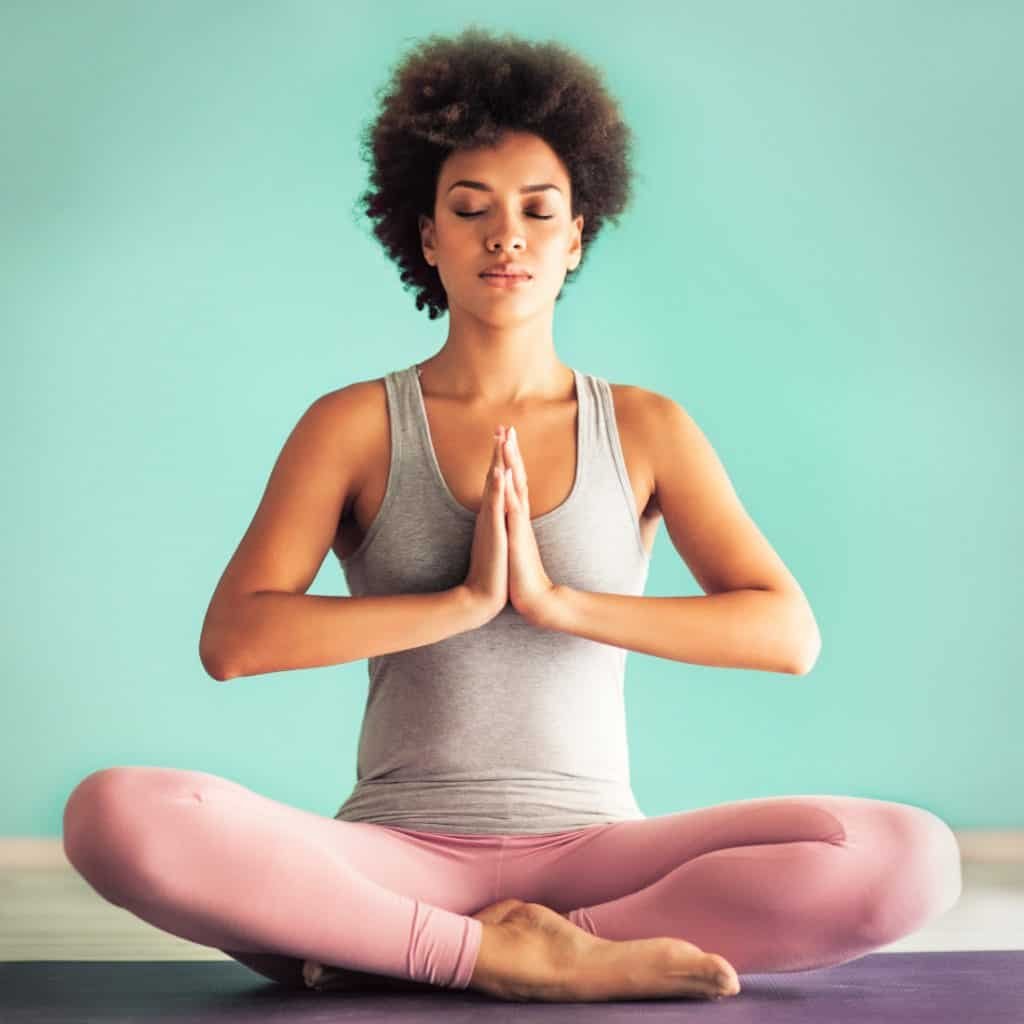
Disclosure: This blog post contains affiliate links for products or services we think you’ll like. This means if you make a purchase from one of these links, 50 Shades Of Healing may make a small commission at no additional cost to you. We only recommend items we use and love.
Types of Meditation
There are plenty of types of meditation. Here are some of the significant types:
Concentration meditation
This type of meditation teaches you how to focus your mind. It’s the foundation for other forms of meditation.
The attention is placed on a single object, held without interruptions or distractions. This type of meditation helps you achieve a sense of calm and stillness. How do you practice concentration meditation?
Here’s how you do it:
- Find a quiet or private spot. Your space should be free of all possible distractions and interruptions.
- Sit comfortably. Wear comfortable clothes. Remember, no interruptions or distractions. The goal is to be comfortable with your body, which will allow you to concentrate your focus on one object. Some do this sitting down, others do this standing or lying down. Rest your hands on your thigh or the cushion you are sitting on.
- Set a timer. You will need to train your body and mind so you have to start with short sessions initially. Set it at 5 to 10 minutes and practice this multiple times a day. You can lengthen your sessions gradually.
- Allow your eyelids to relax. You can close your eyes or keep them open partially. If focusing your sight on an object will help you focus, then you can keep them open. But your eyes have to be entirely relaxed. Relax your mouth. Hold your lips closed.
- Direct your attention to the focus of concentration. You may focus on your breathing, or you may focus on something else. The object you should choose should be easy for your attention to rest upon. It should not be too exciting or boring. Lighting a candle can help you focus. Focusing your attention on the flame is called Tatrek meditation. Allow yourself to experiment with different objects. Moreover, you can allow yourself to feel emotions that may arise in the process. Feel it then let it go.
- Set aside any distracting thoughts. As mentioned earlier, there may be feelings or emotions or thoughts that may come up. Feel them, then let them go.
- Read a short passage from a sacred text. This type of meditation is known as Lectio Divino (divine reading). Read slowly and allow your attention to rest on the words or phrases that may have struck you.
- Breathe through your nose, unless it is occluded. The concentration on breathing meditation is called the Zazen meditation, while concentration on the physical sensations of breathing is called the Vipassana meditation.
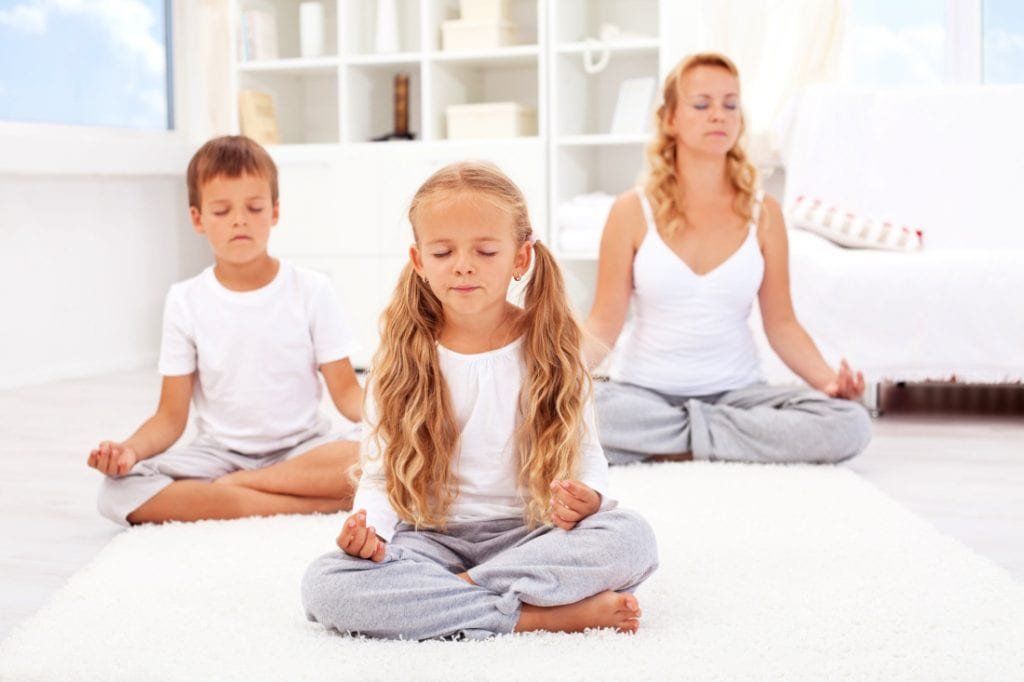
Heart-centered meditation
Involves quieting the mind and bringing awareness to the heart, an energy center in the middle of the chest. This is also called the Heart-Centered Gratitude Meditation, as it draws awareness to the heart, and helps us reconnect with what it means to live and breathe.
When the heart is open, we become more grateful and generous. We tend to operate or function from a place of love and abundance.
Although this is sometimes difficult to do, practicing it will be helpful. With this type of effective meditating, the heart chakra will connect us deeply with all other beings.
As you move through the heart-centered meditation, try to acknowledge everything that arises (feeling, emotions, etc.) with compassion and non-judgment. This is the goal of heart-centered meditation.
These are the steps to connect with your heart’s energy:
Sit in a comfortable position and close your eyes.
Let go of your thoughts and the outside world.
Focus your attention on the center of your chest, where your heart is. The heart center is the point of awareness where feelings enter.
You will feel peace and may feel/see subtle lights. The light may appear white, gold, pale pink, or blue. However, you do not have to see it. You just have to feel whatever is in there.
Breathe gently and sense your breath flow into your heart.
Breathe in and out, and then ask your heart what it needs to say.
For the next 5 to 10 minutes, wait and listen. Your heart will begin to release emotions, or feelings, pent up fear, memories, wishes, or dreams. Pay attention.
Whatever feelings or emotions arise, feel it, embrace it. Just let it be.
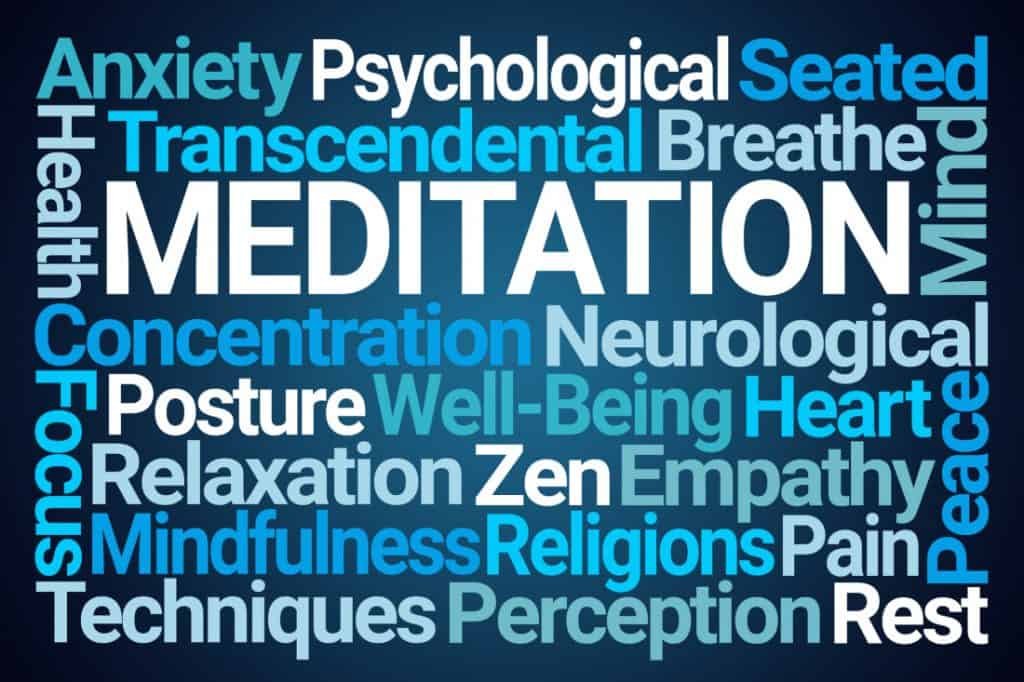
Mindfulness meditation
Encourages you to focus objectively on negative thoughts as they move through your mind, so you can achieve a state of calm.
This is a mental practice of slowing down your thoughts, letting go of negativity, and calming both your mind and body.
This involves awareness of your body and mind and deep breathing exercises. Here’s how you do mindfulness meditation:
- Take your seat. Make sure you are comfortable.
- Notice what your legs are doing.
- Straighten your upper body. This does not mean that you have to be stiff. Let your head and shoulders get comfortable.
- Situate your arms parallel to your body. Let your hands drop on your legs.
- Drop your chin a little and let your gaze fall gently downward. You don’t have to focus your sight on anything. Just let it rest on whatever is there.
- Breathe slowly. Relax. Pay attention to your breath and the sensations of your body.
- Feel your breath.
- If your mind wanders off while doing this, just let it be, but gently return your attention to your breathing.
- Pause if you have to change your body positions or any physical adjustments. Allow space between what you experience and what you choose to do.
- Practice observing without reacting as your mind wanders off.
- When you’re ready, lift your gaze or open your eyes. Notice your environment. Take note of the sensations or feelings at the moment. Notice your thoughts and emotions. Pause for a moment and then decide how you’d like to continue your day.
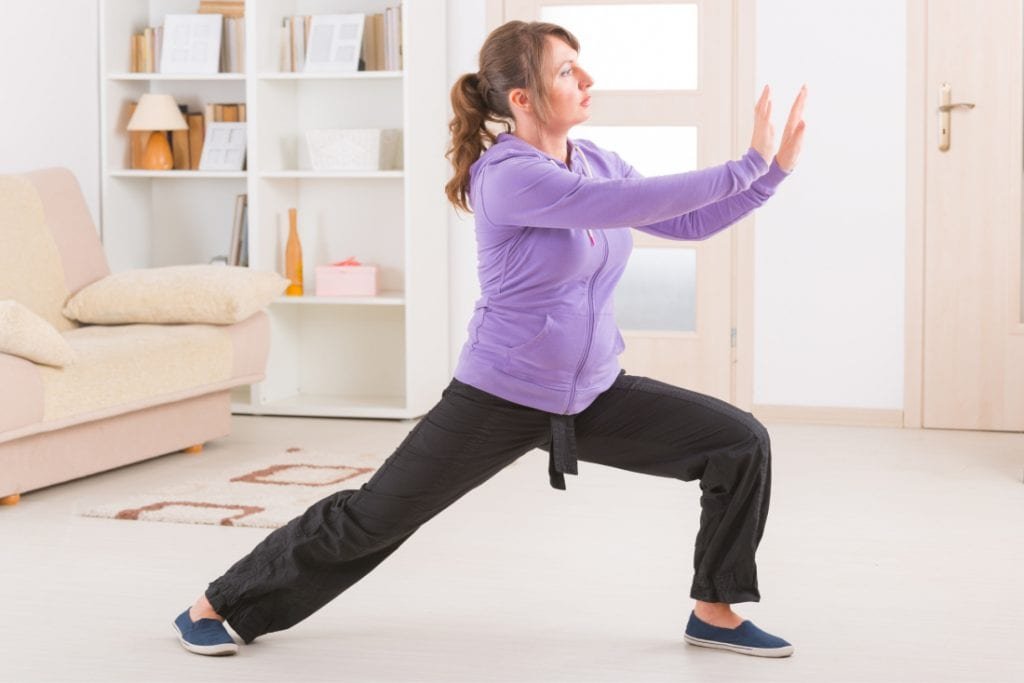
Tai chi and qigong
These are moving forms of meditation that combine physical exercise with breathing and focus. Walking meditation turns your focus to both body and mind as you breathe in time with your footsteps.
These active forms of meditation include body movements that guide you into a deeper connection with your body and the present moment.
This is good for people who find peace in action. This is also good for developing body awareness. Moving meditation involves simple movements.
Moving slowly, firmly, and rhythmically, with correct posture and deep continuous breathing.
Transcendental Meditation
This involves silently repeating a mantra for 15–20 minutes a day and is commonly done sitting with the eyes closed. It is one of the most widely practiced meditation techniques.
This mutes your thoughts and achieves greater awareness. The mantra does not have to be meaningful. It just has to be a vehicle to help the mind settle down.
By focusing exclusively on the mantra, you achieve a state of stillness and consciousness. This type of meditation is taught by a certified transcendental meditation teacher. Some courses are used to practice this type of meditation.

How to Effectively Meditate to Boost Your Mental Health
- Choose which type of meditation you are comfortable with.
- Set a place in your home that will serve as your meditation space.
- Let go of everything: the outside world, the distractions, thoughts, and your emotions.
- Allow yourself to get lost in your meditation.
- Make this a routine, and if possible, do it daily.
- Meditate and be mindful.
I hope this post has helped you learn more about how to effectively meditate, so you can improve your mental health and reduce stress. Now that you know how to meditate, it’s time to start.
Try a few different ways of meditating and see which one is the best fit for your lifestyle.
You’ll find that meditation has many benefits in addition to helping with mental health issues such as stress management, anxiety reduction, depression relief, focus improvement, concentration enhancement.
Free 12 Day Meditation Challenge Printable
Download this free printable I made for you. Get started and Effectively Meditate to Boost Your Mental Health! Below are the items you might need for this printable.
Just a friendly reminder, as with all my printables on 50 Shades of Healing, that these printables are for personal use only. You may not sell them, mass-produce them or claim the design as your own (Sadly I see this happen all too often!). If you have a question about the design feel free to email me.
